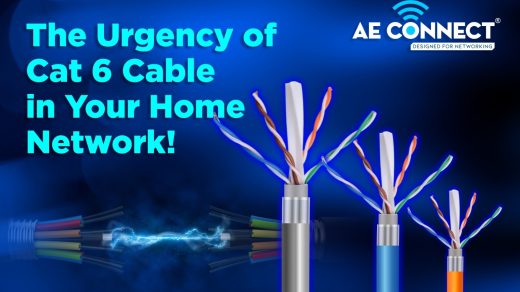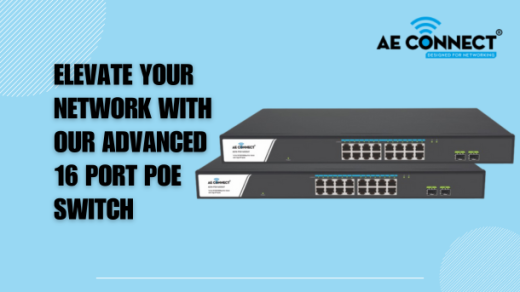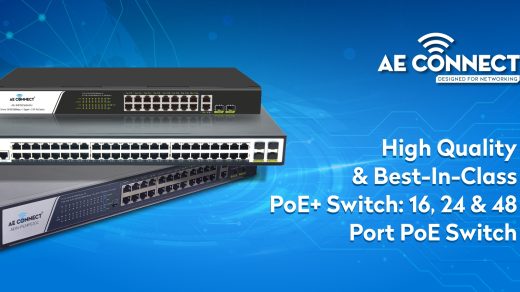Wouldn’t it look tangled and messy when there is a lot of unorganised wiring at data centres, server rooms, or large organisations? Yes, obviously. It seems so chaotic that even the cabling operator can get confused. Although our modern world is moving towards becoming more wireless every day, there’s still a necessity for wired networks for lightning-fast network speeds, data transmission, fast internet and more. There is still a large portion of industries that require cabling as a significant part of their work. The bigger the organisation, the bigger the cabling required. To manage such an intertwined cabling system, a patch panel is used.
What exactly is a patch panel?
As simplified cable management is a necessity for modern networking infrastructures, a patch panel is an efficient and modular networking tool that makes it much simpler to migrate, expand, or alter the cabling infrastructure while keeping server rooms or data centres well organised. The jacks available on a patch panel are used to connect and route circuits for testing, connecting, and monitoring. On one side of the patch panel hardware assembly, there are blank ports, and on the other, there are termination points. Each port has a patch connection that links it to another port that is located elsewhere in the building. As an aim to provide globally trusted next-generation data networking solutions, AE Connect manufactures and provides best-in-class patch panels that make it possible for you to manage networking infrastructure at your fingertips. Want to know about the benefits of using a patch panel? If so, let’s move forward toward its benefits.
Benefits of using a patch panel
Patch panels have become a crucial cabling component for large-scale enterprises since they require an extensive and organised networking infrastructure. The patch panel offers multiple benefits to businesses, including the ability to connect more widely while also reducing their increased financial stress. Here we will go through some of the most important advantages of patch panels.
The Tangle’s Management
Nobody would contest the fact that properly organised cabling is usually a superb visual feast for everyone. If you are bothered by a messy nest of network cables, consider setting up a patch panel. Enhanced organisation and simpler management of your wired network are the main benefits of employing patch panels, which are sometimes referred to as “patch bays”. Patch panels make it simple for network administrators to deploy, configure, or replace complicated network topologies by centralising connections in one spot.
Greater Versatility
Patch panels are an intelligent choice for speedy communication line transfers from one place to another. When something needs to be changed, patch panels offer versatility and eliminate the necessity to re-run wires or move devices around.
Minimises Cable Costs
Usually, patch panels are positioned nearer to the networking equipment. This enables the application of shorter patch cables as opposed to longer ones, which results in less rush of wires near the networking zone, reducing cable costs. On a smaller scale, this may not appear to be a noteworthy cost saving, but on a larger one, it results in significant cost savings that ultimately help the firm flourish.
Economical
Patch panels don’t perform any intelligent tasks other than facilitating the transfer of data, which accounts for their low cost. The Patch Panels are the ideal choice for organisations that need to fulfil their networking demands without raising the expense of their infrastructure since they are reasonably priced.
AE Connect has an in-house research and development unit that specializes in the design, development and customization of networking solutions that include PoE+ solutions, fibre solutions, structure LAN solutions, networking rack cabinets and networking tools.
Patch panel: how do you choose one?
Before we buy anything, we first go through the specifications of products to see if they match our necessities or not. The same holds true for a patch panel. You must first identify your requirements in order to purchase the appropriate patch panel.
How many connections does your patch panel have to facilitate? Does the panel have to be twisted pair, fibre optic, coaxial, or maybe even one that can support all three? Is it necessary to rack mount it in a wire cabinet for potential development, or should it be joined up with other patch panels instantly? If so, what rack size is it going to be mounted on? Does wall mounting matter? What speed must your new patch panel be able to handle? Even though it may seem like a lot to ask, these are all crucial questions that will assist you in choosing the best patch panel for your business or home application, ensuring that you get the most out of it now as well as in the future. When you get the answers to all these questions, you are sure to find the best patch panel that will meet your requirements. Let us discuss some of the basic but key points you should take into consideration while picking a patch panel.
Connection Types
What kind of connections you require should be the first thing you think about when choosing a patch panel. If you want twisted pair RJ45 Ethernet connections, you should concentrate on patch panels that include those connections by default. On the other hand, if you want a variety of connection possibilities, you may explore modular alternatives, but for the majority of applications, a single patch panel type is ideal.
Performance
Now, determine what level of performance you require from the networked devices while considering the cable types that your patch panel supports. Starting with OM1 and onto OM5, patch panels can accommodate various fibre optic cables, with more cables supported delivering better performance. When buying a patch panel, check the cables that are currently being used in your connections to ensure that the patch panel you choose will work with them.
You must take the cable type into view for patch panels with RJ45 connections. The majority of patch panels serve Cat 5e speeds at a minimum, however more recent patch panels can offer Cat 6 or Cat 6a cables for enhanced performance. All of these will work with older cable standards as well, so if the price difference isn’t too big, having a patch panel that covers the more contemporary Cat 6a cable standard is the best option. This offers you the flexibility to replace your cables and other networking devices as needed or wanted in the future to increase networking performance.
Patch panel size
It is important to comprehend the necessity of fundamental dimensions like height, depth, width, and weight. Patch panels are typically measured in terms of RU or U, which refers to the height of the equipment installed on the rack or wall. Patch panels with 1RU, 2RU, and 4RU dimensions are employed for high-density applications. It’s preferable to always select high-density patch panels, keeping future expansion in mind.
Apart from patch panel size, port density also matters the most. AE Connect offers 24 and even 48-port patch panels to meet your flexible network expansion needs at your server rack or wire closet. These panels are designed with your networking management needs in mind.
Patch panels offered by AE Connect and their features
AE -PP624 Patch Panel
– Cat6 24 ports loaded patch panel
– Easy identification labels for RJ45/RJ11 ports
– Designed to ensure the highest performance considering durability, style
– Easy snap in Keystone Jacks
– Rear cable management included
– Entire steel 24 ports UTP blank patch panel
– Material of Product: Entire steel outer frame, with plastic powder cladding.
– Colour: Black
AE-PP648 Patch Panel
– Cat6 48 ports loaded patch panel
– Easy identification labels for RJ45/RJ11 ports
– Available in 48 Ports 1U / 48 Ports 2U
– Designed to ensure the highest performance considering durability, style
– Easy snap-in Keystone Jacks
– Rear cable management included
– Entire steel 48 ports UTP blank patch panel
– Material of Product: Entire steel outer frame, with plastic powder cladding.
– Colour: Black
AE-PPAC6UTP Patch Panel
– Angled design for better cable routing
– Standard 19’’ rack-mountable
– 180-degree punching type designed for network management
– Supports 24-port in 1U height
– Blank slot to fit Data Keystone
– With rear cable managers and fixings
– Easy port labelling identification provision
– With back bar support for convenient cable management
– Loaded with removable Cat6 unshielded keystone jacks
AE-CAT6APP-SFTP Patch Panel
– Supports 10G Base-T
– Quick installation, no punch down required
– Standard 19’’ rack-mountable
– 24 ports in 1RU space
– Universal wiring blocks for easy termination
– Detachable rear cable management to keep patch cables neat and tidy
– Loaded with removable and interchangeable shielded toolless keystone jacks
– Complies with ISO/IEC11801, TIA/EIA568 standards
– Gold-plated connection pins
– With flame retardant PC110
As smart cable networking infrastructure is a necessity, AE Connect’s top-of-the-line and high-quality patch panels take part and ensure simplified cable management and high-speed networking transmission for a seamless networking experience. Along with it, AE Connect offers patch panels with individual IO as they are easy to use and replace, unlike the PCB-based patch panels, which are not user-friendly.
Also Read:
- Know All About SFP Module And How It Is Used
- Networking at its best with Faceplate from AE Connect
- Patch Panel, A Structured And Organized Cabling Solution
- Best Media Converter, SFP Module & Fiber Switch: Fiber Active Networking
- Understanding PoE Switch And Its Types: Everything You Need To Know
- Best In Class Fiber Optic Media Converter Manufactured By AE Connect




